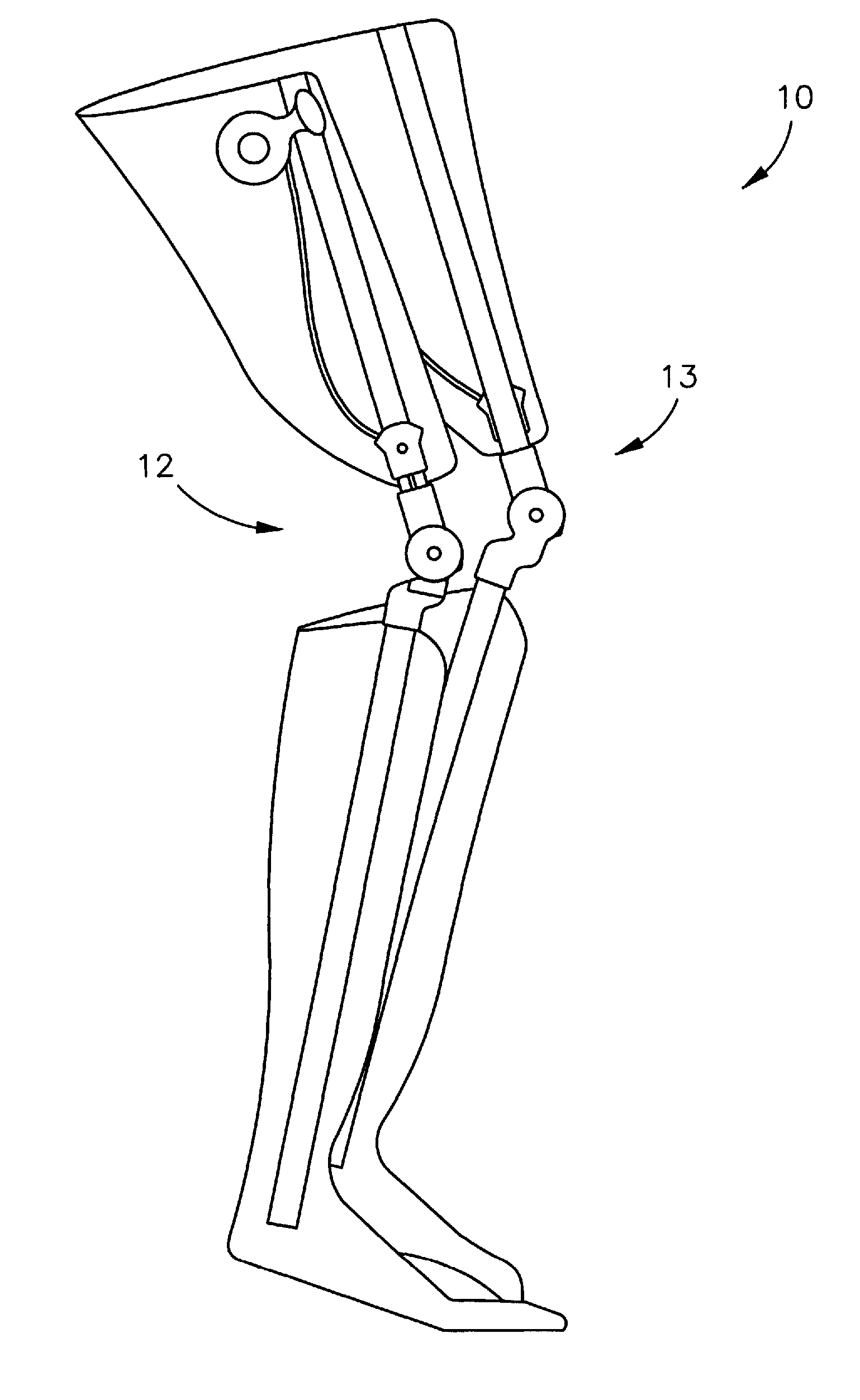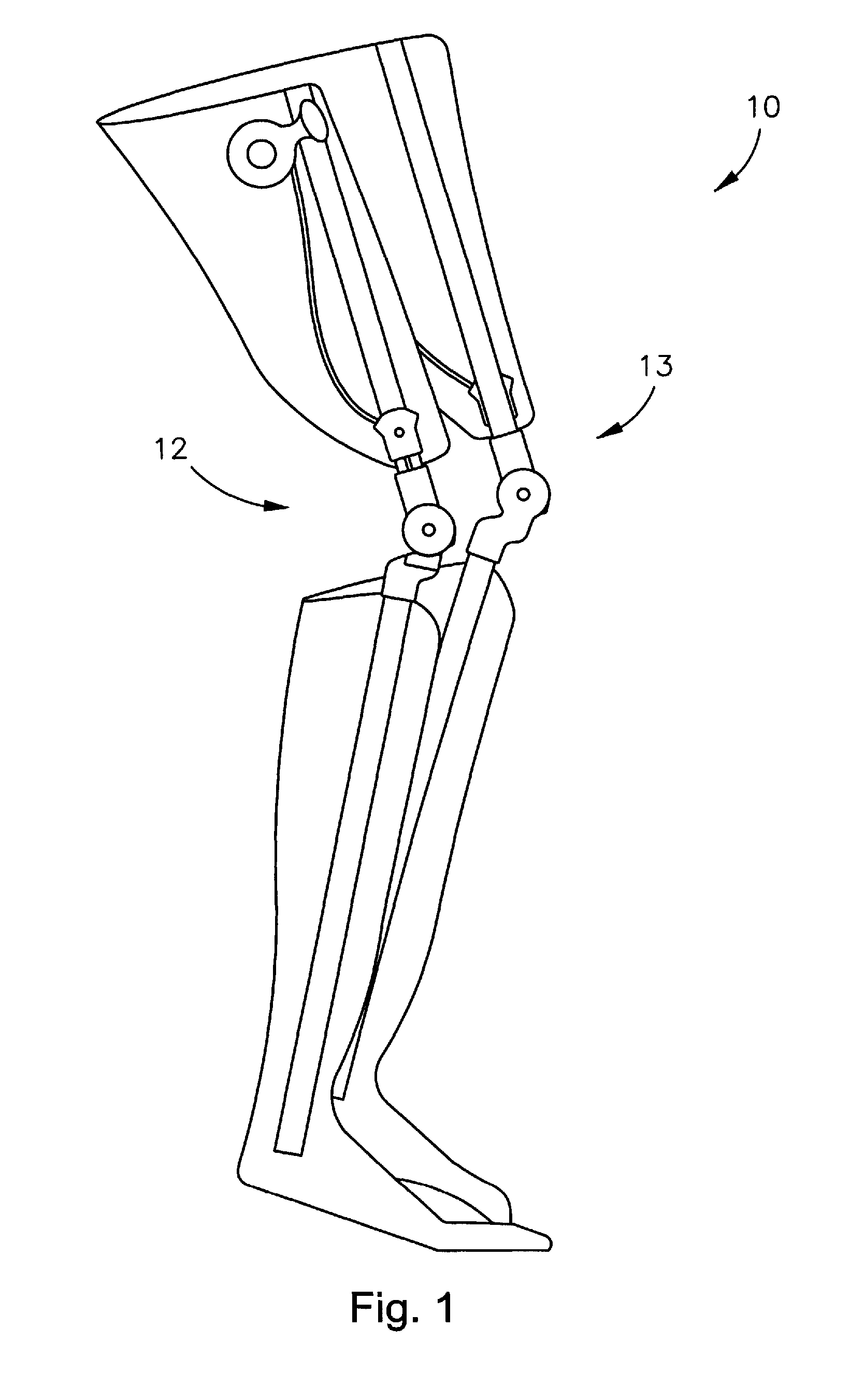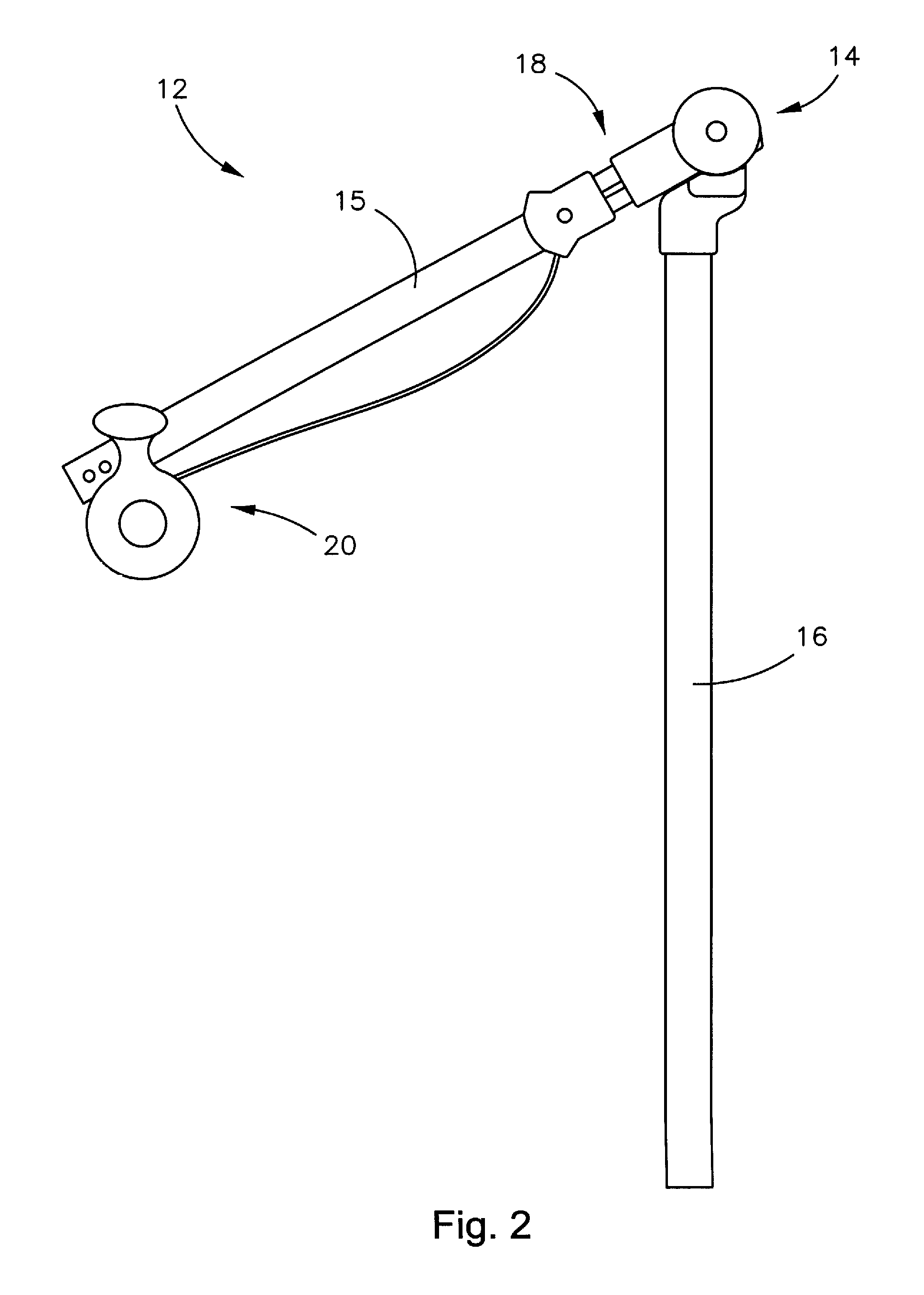Ambulating ankle and knee joints with bidirectional dampening and assistance using elastomeric restraint
a technology of ambulating ankle and knee joints and elastomeric restraints, which is applied in the field of hinge or joint assemblies for orthotics, prosthetics, or rehabilitation devices, can solve the problems of human knee and ankle systems, patient's ability, and the proneness of traditional orthotic devices to rigid movement, and achieves dampening the shock absorption feature, high stance control moments, and resistance to ankle and knee flexion
- Summary
- Abstract
- Description
- Claims
- Application Information
AI Technical Summary
Benefits of technology
Problems solved by technology
Method used
Image
Examples
first exemplary embodiment
An Operating Description of the First Exemplary Embodiment
[0092]FIGS. 5a-5e illustrate the hinge assembly 14 of the knee brace 10 in various positions of use, each position employing one or more features of the present invention. FIG. 5a illustrates the hinge assembly 14 in a position of full flexion, with the angled shoulder 58 of the distal half joint 32 bearing against the rear edge 60 of the proximal half joint 30, the bearing relationship serving as a stop to rotational movement in a flexion direction. At full flexion, approximately 60° exist between the upper and the lower members 15, 16. Accordingly, approximately 120° defines a complete range of motion between full flexion and full extension.
[0093]FIG. 5a shows the lock slide 44 engaging respective spur teeth 62 of the ROM disk 34, thereby enabling sit-to-stand support, for users having difficulty rising from a sitting position, through one-way, step-advance ratcheting. As shown in FIG. 5a, rotational movement toward extensi...
embodiment
Bi-directional Ankle Embodiment
[0132]FIGS. 10a and 10b illustrate a bi-directional ankle embodiment, or ankle joint 200, of the present invention. The bi-directional ankle joint 200 is shown mounted onto a ground reaction AFO, or leg and foot brace 201. The leg and foot brace 201 includes leg beams 202 mounted under a plastic shell 204 of the brace 201 to insure intimate fit and low profile. Two bi-directional ankle joints 200 are included in the brace 201, and each include a low profile-high support contoured strut 206 (proximal and distal), thereby allowing in-shoe wear of the brace 201 without requiring increased size shoe.
[0133]FIGS. 11a and 11b illustrate the bi-directional ankle joint 200 alone. The strut 206 is low profile and slim, with three mounting holes 208 that follow foot anatomy and hug the respective surface of the foot. The ankle hinge 210 has a cupola design, and includes an outer 211 and inner 212 surface that fits perfectly over the bony prominence of the ankle, ...
PUM
 Login to View More
Login to View More Abstract
Description
Claims
Application Information
 Login to View More
Login to View More - R&D
- Intellectual Property
- Life Sciences
- Materials
- Tech Scout
- Unparalleled Data Quality
- Higher Quality Content
- 60% Fewer Hallucinations
Browse by: Latest US Patents, China's latest patents, Technical Efficacy Thesaurus, Application Domain, Technology Topic, Popular Technical Reports.
© 2025 PatSnap. All rights reserved.Legal|Privacy policy|Modern Slavery Act Transparency Statement|Sitemap|About US| Contact US: help@patsnap.com



